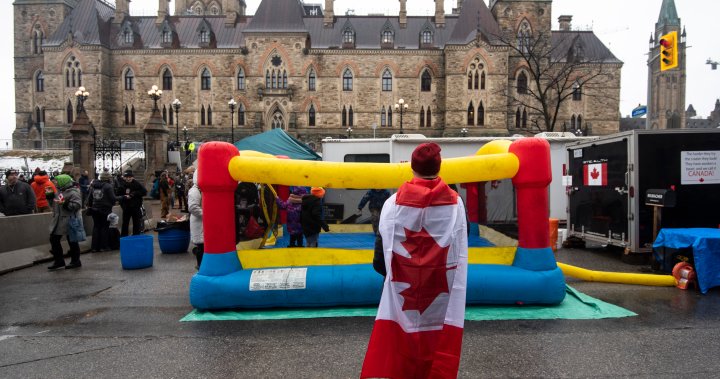The loosely knit collective that vocally opposed COVID-19 health measures has morphed into a movement waging a broader fight against “perceived government overreach,” says a newly released assessment from Canada’s spy agency.
The Canadian Security Intelligence Service’s analytical brief traces the evolution of the “Freedom” movement that began to emerge following the early 2022 protests that paralyzed downtown Ottawa and key Canada-U.S. border points.
In early February 2022, the streets around Parliament Hill were jammed with protesters, many in large trucks that rolled into the capital beginning in late January.
Initially promoted as a demonstration against COVID-19 health restrictions — including lockdowns and vaccine mandates — the gathering attracted people with various grievances against Prime Minister Justin Trudeau and his government.
Exactly two years ago, the federal government responded by invoking the Emergencies Act, which allowed for temporary measures including the prohibition of public assemblies, direction to banks to freeze assets and a ban on support for participants.
The Canadian Press used the Access to Information Act to obtain the April 2023 CSIS brief, “Defining the ‘Freedom’ Movement,” and related assessments of what the spy service calls ideologically motivated violent extremism.
Get the latest National news.
Sent to your email, every day.
While a movement may collectively hold extreme views, only a small portion of those involved may be willing to engage in serious violence, CSIS says.
The intelligence service points to the constitutional protection of freedom of expression and stresses that it does not investigate lawful protest unless it is carried out in conjunction with threat-related activities.
As many public health measures began to be lifted by early spring 2022, CSIS observed individuals “broadening the scope of their grievances” and identifying as members of the “Freedom” movement.
The change was also evident to those who saw and heard flag-waving protesters who lingered around the Parliament Buildings and gathered on highway overpasses.
The “Freedom” movement builds on the fundamental narratives of the anti-public health measures movement, including opposition to globalization and suspicion of pharmaceutical companies, with a heavy focus on alleged government infringement of personal liberties, the CSIS analysis says.
“While this perceived tyranny is widespread across the movement, other narratives are becoming increasingly common among adherents,” the brief says, citing opposition to:
- the LGBTQ+ community, specifically drag story times and inclusion of material in public school curriculums;
- perceived increase in global control over Canada by international institutions such as the United Nations and the World Economic Forum;
- Communism;
- and the concept of “15-minute cities,” on the basis that planning easily navigable communities is a plot to restrict mobility rights and create a mass-surveillance state.
CSIS is looking at the potential of such narratives to lead to disruption and violence, said Barbara Perry, director of the Centre on Hate, Bias and Extremism at Ontario Tech University.
“They’re of the opinion that these are the kinds of grievances, if you will, that are likely to bring people to the brink of violence,” Perry said in an interview.
CSIS defines an ideologically motivated violent extremist movement as a loosely organized collection of people, linked by virtual and offline networks, who share a distinct identity.
Such movements have adversarial relations with clearly identified opponents, and aim to carry out, resist or undo social change, the intelligence service’s brief says.
A movement does not have a formal or legitimate leader, but rather is guided by the people who join it in more or less spontaneous fashion, CSIS says.
Perry said the move toward these looser, individual-based movements is “a worrying trend” in some respects because it’s “much more difficult to identify which of those hundreds of thousands, if not millions, of people” is going to commit an act of extreme violence.
© 2024 The Canadian Press


